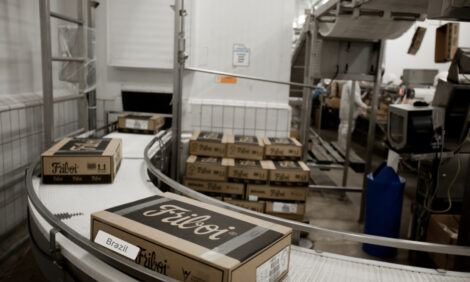



Will Increasing Beef Prices Impact Consumer Demand
US - The beef industry has entered uncharted territory with the possibility of $120/cwt fed cattle occurring during this year, writes Shane Ellis, Extension Livestock Economist at Iowa State. This is great news for cattle feeders as the costs of production are keeping up the pressure and cash market margins are expected to be tight or get tighter ( if they are not tight enough already). The industry is also facing the challenge of short feeder cattle supplies and cow-calf sector that is slow to build beef cow numbers. Through the fed and feeder cattle price turmoil there is a question most producers have on their minds. “How much will the consumer be willing to pay for beef?” Eventually consumers will look for cheaper protein alternatives, but to say when that will be is difficult to say. Per capita consumption of beef has been on a long term downward trend and could decline as much as 2 per cent as there will be about 1.5 per cent less beef produced for a growing population and export market.
Consumers are well aware that the price of everything is going up, so they are expecting to see prices at the meat counter going up. They may not like it, but they are not surprised. It is the degree of “sticker-shock” that will determine the push back from consumers. Consider the per cent age change in price of beef and gasoline in the past three years. Figure 1 tracks the per cent change in the price of cattle, beef and gasoline since the beginning of 2008.
Figure 1. Percent Change in Cattle, Beef and Gasoline Price since 2008
Several observations about price variability can be made from this graph. First, retail prices are much more stable than cattle and boxed beef prices. Second, even though retail beef prices are at record highs they are not nearly as volatile as the retail gasoline price. Retailers also try to insulate their customers from dramatic price variations. Most grocery retailers are absorbing a portion of the rising cost of wholesale foods including meats. Consumers are still carrying some degree of sensitivity to their personal economic situation, and demand for ground product has remained strong even after the general economy was declared to be in recovery. Ground beef prices have increased at a faster rate than whole cuts as consumers maintained the preference for ground product they developed during the lowest points of the recession.
So then what would make consumers start to move away from beef? The beef market is still connected to the economy, so a second dip in the recession would have a definite impact. Just as with the economic slowdown that occurred in 2008 a recurrence of the recession will force consumers to take a hard look at their expenditures and cut back where possible. A second factor that could impact beef prices is the price of competing meats. Pork and poultry prices have also increased, and there is not a significant increase in supply on the horizon that would drive down prices.
Beef supplies are expected to continue to decline over the next 3 to 4 years which will keep bullish pressure on the market. In short, as we see declining consumption in the coming years a small portion of it may be a loss of quantity demanded, but that loss will be far out shadowed by the declining supply of beef available to be utilized. In the meantime, tighter feeder cattle supplies and an energy driven corn market will also keep profit margins tight. In the new world of higher commodity prices, increased revenues and costs, profitability continues to be fleeting and elusive, and risk management more essential than ever.


